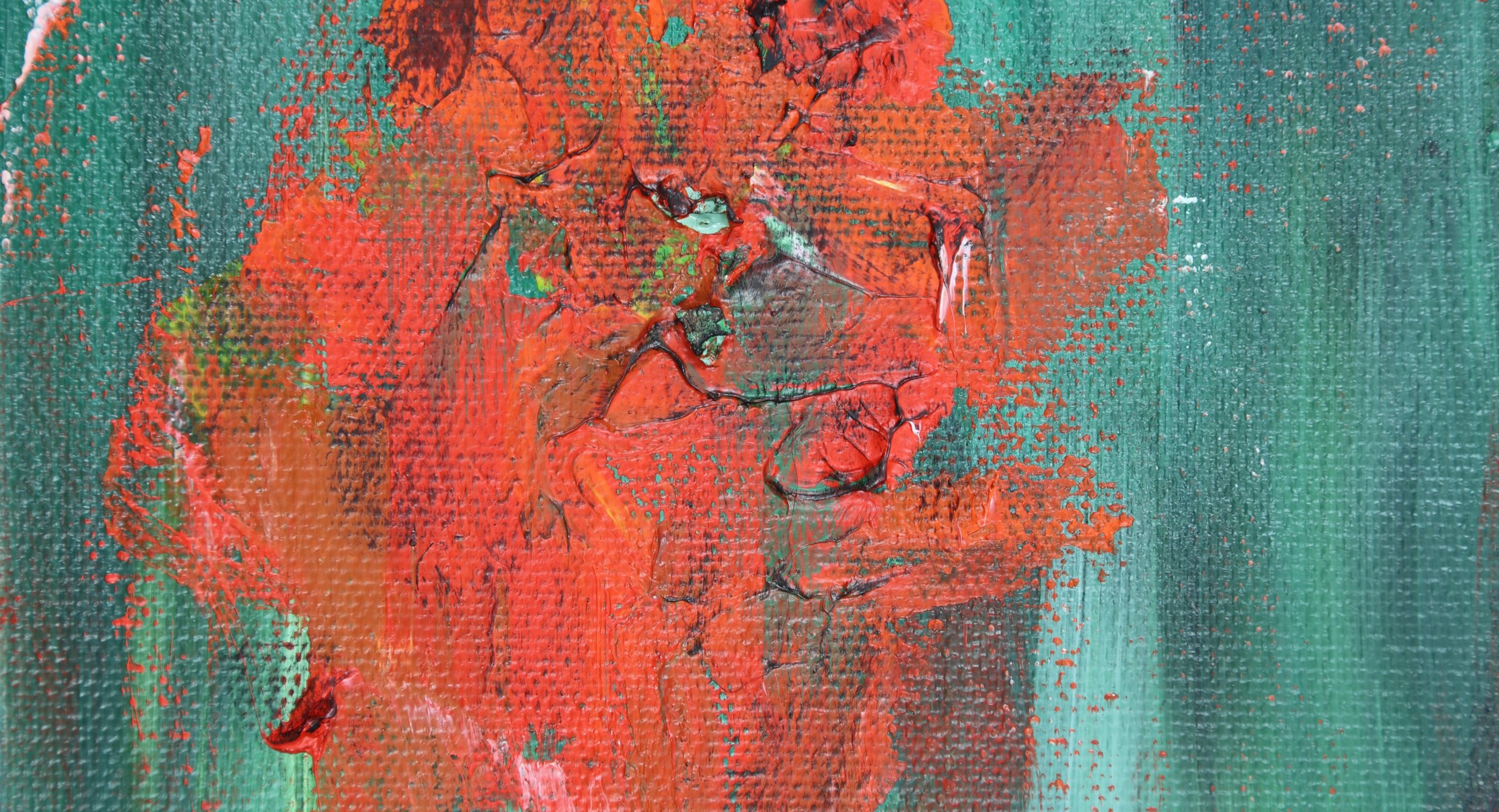My tiny yard has a rosebush and a garden I do not weed—remnants of the previous, green-thumbed owner. I often sit there in the morning’s energetic light, drinking my tea and trying to breathe slowly. Breathing slowly can be hard, in the midst of so much turmoil, so much wrong. I do not know how to relish my little spot while also grieving that not every person has peace and shelter.
Music helps. I have begun listening to the same album on repeat as I sit on my steps. Somehow, Jon Guerra’s music wraps around me, holding both my gratitude and my sorrow. The singer-songwriter describes his work as “a collaboration with quiet.” His most recent album, Keeper of Days, offers more seeking than finding, more questions than answers. In a time when everyone seems eager to share their opinion, sure they have the correct one, I find this refreshing. It prompts me to reflect, take stock of my own pain, apathy, or misconceptions, and turn to Jesus so he can sort me out.
Guerra’s aching voice and ethereal melodies, particularly in his song “Citizens,” echo my loose-end prayers and cries to understand the world we live in.
Coming to you ’cause I’m angry
Coming to you ’cause I’m guilty
Coming to you ’cause you’ve promised
To leave the flock for the one
The complexity of conversations on the pandemic and racism have heightened my desire for a space to think, breathe, and process. The avalanche of information coming through newsfeeds and social-media pages can be both exhausting and limiting; it leaves my overloaded brain spinning like a tricycle stuck in the sand. Statistics can inform. They can also numb. New arguments and opinions can broaden thinking, but they can also cause knee-jerk reactions that are difficult to ignore.
For me, visual art, poetry, and storytelling provide a place where statistics become people and differing arguments become questions that inscribe other voices in my brain. It is not that art is an escape from the real: rather, through art, I am better able to grieve with those who grieve, rejoice with those who rejoice: better able to find common ground with other humans. Thoughtful research and discussion are necessary tools through which to examine any issue, but these lenses of art can bring a humane complexity to argument. Most issues are too multifaceted to be captured neatly in an article or study. And I, like most humans, am stubborn; I need to work out truths for myself, not be told them point-blank. Realizing this has changed how I look to those among us who are artists. I don’t just enjoy their work. I lean on them to help me see through new eyes.
It is not that art is an escape from the real: rather, through art, I am better able to grieve with those who grieve, rejoice with those who rejoice: better able to find common ground with other humans.
In 2016, in the morass of the election season and its aftermath, in the midst of accusation and fear and polarization, Maggie Smith’s poem “Good Bones” popped up in my Twitter feed.
Life is short and the world
is at least half terrible, and for every kind
stranger, there is one who would break you,
though I keep this from my children. I am trying
to sell them the world. Any decent realtor,
walking you through a real shithole, chirps on
about good bones: This place could be beautiful,
right? You could make this place beautiful.
I have forgotten all the news articles I read in 2016. I cannot recall any of the witty opinion pieces with their slam-dunk arguments. But “Good Bones” stayed with me. The foundations are good, right? Please God, let them be good. The poem, then and now, deepened my longing for justice and pointed me back toward Scripture’s promise that this earth truly is worth saving. Smith’s poem can resonate with readers in any political extreme. It can speak to readers during this pandemic, during many times of many evils. It is a conversation starter that finds unifying threads, not a conversation finisher that silences opposing views.
The secret weapon of the arts is their ability to slip past our presuppositions. The arts present the “. . . ?” at the end of a sentence. Good art is saturated by a particular element of truth, yet that truth is best arrived at when the viewer, the reader, the listener does his own legwork, and that legwork can sometimes be a kind of wandering.
Good art is saturated by a particular element of truth, yet that truth is best arrived at when the viewer, the reader, the listener does his own legwork, and that legwork can sometimes be a kind of wandering.
When it comes to receiving wanderers, the Bible is perhaps the greatest example. The whole of Scripture is dedicated to inviting humans from all walks of life. It does so by dancing between narrative storytelling, songs, poetry, and historical accounts, often presenting the truth in indirect ways. Christ’s parables are like wisdom gifts that must be unwrapped to be received. The book of Job explores human suffering, but not with an itemized list of explanations. Instead, it discusses various theories for why pain exists, then leaves these questions unanswered, the loose ends still flapping in the breeze.
This not only gives space for contemplation and community discussion, but it compels it. It triggers ongoing conversations, urgent ones, as Christians continue discovering new layers of meaning—in each generation, and throughout each Christian’s life. We need these dialogues and differing opinions, both as we examine Scripture and as we try to understand our culture today. As novelist Chimamanda Ngozi Adichie has said, “The consequence of the single story is this: It robs people of dignity. It makes our recognition of our equal humanity difficult. It emphasizes how we are different, rather than how we are similar.”
The arts can simultaneously hint at many stories, and can gesture toward the way that they might make up a whole. Adichie’s novel Americanah provides a kaleidoscope of small windows into the life of a Nigerian woman in both her home country and the United States. These windows do not create a whole, but they point to it, transforming unknown people and worlds: here is a human, with her own story; here’s another.
Adrian Brandon creates these windows through his series of portraits titled Stolen. Each portrait is of a black person killed by police. Using markers, he colors pencil sketches of their face for a limited time—one minute for each year of their life. “Art has the ability to pull us in through feelings and emotions. It invites us to be vulnerable and can transcend politics and party lines, giving us a more universal reach,” Brandon said in an interview with My Modern Met. “This fight is about human lives and art helps us remember that.”
Watching Brandon add color to each portrait while the timer counts down creates a small level of anxiety in the viewer, just as seeing the incomplete drawing feels unsettling. The series puts individual humans center stage, creating a silent case for justice. However, each viewer is left to articulate the arguments in their own way. Brandon presents an unfinished portrait, letting others fill in the white space.
The juxtaposition between beautiful art and the pain it can reflect is striking. This contrast is something artist and poet Morgan Harper Nichols portrays. She has spent several years using poetry and digital art to tell the stories of the people who reach out to her. Her tender lines in the poem “Engage in the Long, Faithful Work” ask readers to consider how words are not always interpreted the same way.
And as you lean into Light,
be gentle with the word “darkness.”
For more than it merely means wrong or bad,
it is also the color of a full, starless night sky,
and actual bodies
of human beings
who have been overlooked
too many times.
Many, many, words
hold more than one meaning.
It can be a relief to have my lens stripped away for a moment. It is easier to step into another viewpoint that way. Paintings, songs, or stories can disarm me. Their subtle relatability, startling beauty, or unexpected outlook often makes it easier to drag my biases aside. Instead of a mental wrestling match, I am free to observe and be present. My ideas can shift more readily. Words can be allowed to have more than one meaning. These encounters do not feel like a confrontation; rather, they are like taking a long, slow breath of someone else’s air. For me, “We Should Make a Documentary About Spades” by Terrance Hayes is one such long inhale. The poem is filled with the tension of high stakes, of winning and losing, and of origins. I am left feeling as though I was invited to participate in a snapshot from another person’s life.
These encounters do not feel like a confrontation; rather, they are like taking a long, slow breath of someone else’s air.
Similar to Hayes’s poem, Scott Erickson’s simple yet reverberating art does not hand the viewer an answer. Instead, it presents giant questions or tiny nuggets of truth that entreat further thoughts. In a recent series, Erickson reimagines what certain stories in the Gospels might have looked like had Jesus come to earth during racial segregation in the United States. His art reminds viewers that majorities and those with power had more risk of missing Jesus’s actions than those on the margins. This prompts us to consider Christ’s character then, and what it means now.
Erickson’s work reflects how the arts can magnify giant issues by illuminating small details. We need this. We need to zoom in to a detailed person’s life and zoom out to a global perspective. Our current shared pandemic is an example of humanity’s connectedness and vulnerability, but our commonalities run deeper than a single group experience. John Paul White brings this into sharp relief in his duet with Rosanne Cash, “We’re in This Together Now.”
It’s a lonely world
But it’s our only word,
And we’re all in this together now
Back on my sunny steps, I listen to “Keeper of Days” with tears in my eyes. I am thankful to know at least one other person shares my same aches; even this kinship between artist and audience can be a wonderful gift. The theme of these varied artistic works is that they request a pause. The creators do not shy away from life’s difficulty. They leave it hanging there, offering others a framework to consider, a shelter to duck into. As the news cycle rushes past, they are also points to return to: they are anchors into more permanent concerns, rewarding repeated consideration. And we must hesitate there, reconnecting with what unifies us and remembering what is worth fighting for. In a world where response times are measured in minutes, not days, we must not lose these pauses.





